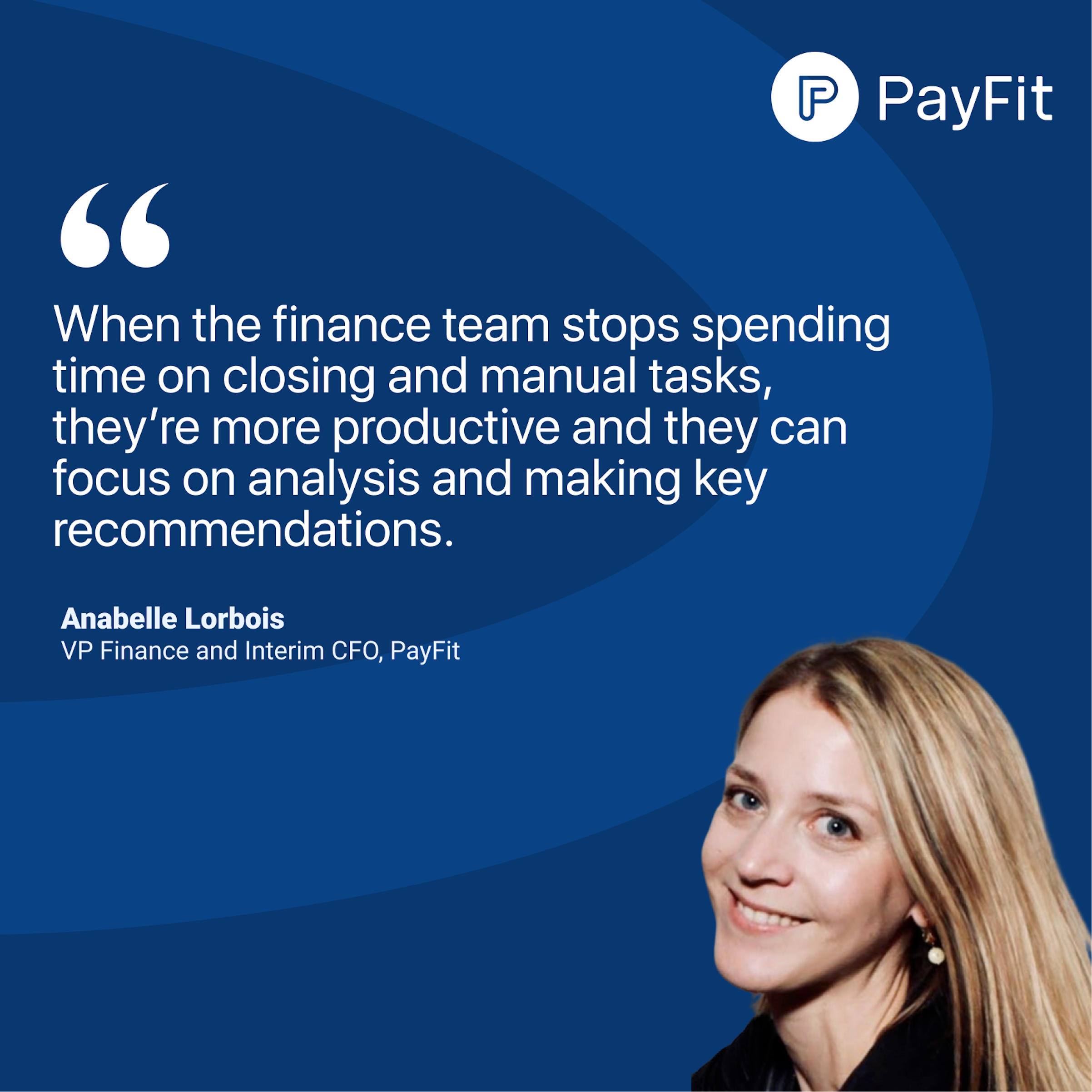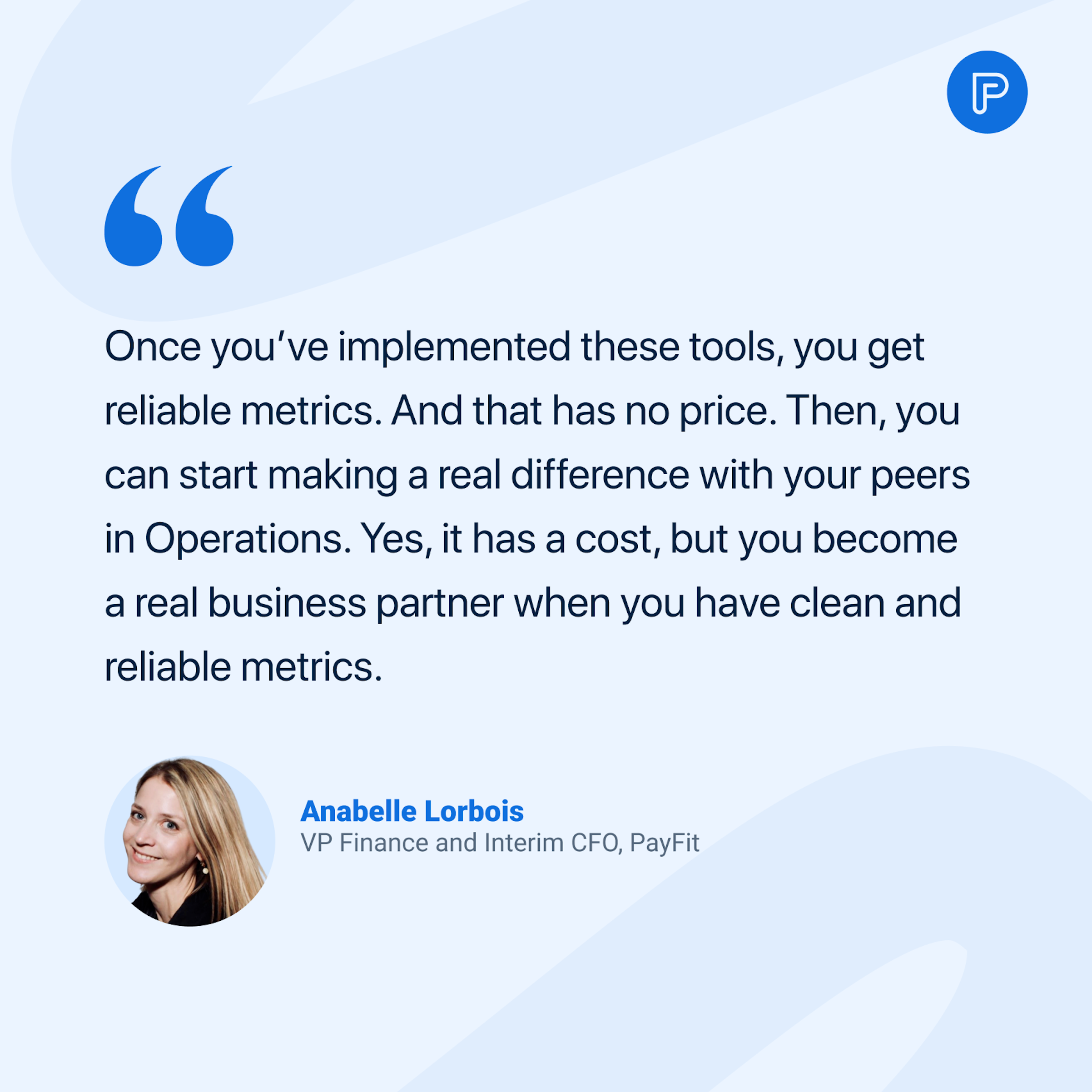Three Business Cases that Make Building Your Perfect Tech Stack Priceless

Any investment your organisation makes will require an assessment of ROI in order to justify the cost, time and labour needed for implementation.
But when it comes to building the perfect tech stack, especially for Finance, there are several business cases you can make to support business process improvement for this function.
If you want to scale your business, operational tech stacks are your cornerstone. Without the tools to streamline your procedures or eradicate manual tasks, your business is growing nowhere (read that twice).
Smart finance leaders are the ones that can see the real wins behind automating daily tasks and improving business processes. Let’s look at three solid business cases you could make to advocate for your ideal tech stack.
But first...
There is no such thing as a one-size-fits-all tech stack
This is something our VP of Finance, Anabelle Lorbois, spoke to Spendesk about during their latest Tools Talk.
In breaking down PayFit’s current tool stack, she provided crucial context around some of the decisions made in developing PayFit’s own tech stack.
And it’s this context that is key. No two tech stacks at different companies should ever look the same. Your company will have its own unique way of operating and its own specific challenges depending on its size, industry, segment and culture. And the people, processes and tools you choose to run it will reflect this.
For PayFit, which was already a fast-growing SaaS, Annabelle and her team needed a set of tools that could handle scaling easily and contend well with a company that operates across different geographic regions. At the time, PayFit was already a fast-growing company with five entities in Europe, so it wouldn’t have made sense to implement SaaS tools that were limited in the regions they could serve.
These business cases are just the start
That is the start of building a solid argument you can present to your C-suite.
Stakeholder buy-in for things like finance or payroll software is about so much more than just convincing leadership to splash the cash. It’s about painting a clear picture of the value a particular project or investment could generate.
Will it help a particular team in achieving stronger outcomes with their work? Will there be time-saving aspects that lead to more focus on high-value strategy, ideas or transformation?
You need to have a crystal clear idea of what the after looks like and how much better it will be from the before.
Of course, there will be an exercise in running a few numbers to support that vision. But figuring out how to calculate ROI is a whole topic in itself that we won't go into (yet).
For now, here are three rough business cases that make for a fantastic starting point when exploring the value you could get from building the ideal tech stack.
Three business cases that make investing in your ideal tech stack a priceless decision
From making audits sleeker to saving oodles of working hours your team could put to better use, here are three solid business cases to support your dream tech stack.
Creating a squeaky-clean audit trail
Let’s face it: anything to do with ensuring compliance can be a costly business. But as Anabelle puts it, you clearly can’t grow without it.
“Once you start having due diligence auditors and reporting to investors, you need robust processes.”
In the early stages of a business, this may not be your main priority. But as your business begins to scale, a clean audit trail becomes a must-have.
An audit trail isn’t just a chronological record of all the activities that occur within your business. It’s also your insurance in the wake of a data breach or fraud. If your trail is water-tight, it becomes much easier to identify the instigators of a breach or trace fraudulent activity back to its source.
Having a solid tech stack in place that covers all aspects of record-keeping will help you cultivate good governance from the get go. And cloud-based software is one of the best ways of keeping your records safe and organised.

Having solid, reliable metrics to fall back on
As the saying goes, you’re only as good as your data. Outdated reporting systems (such as Excel sheets) combined with disorganised, unreliable data sets are some of the biggest roadblocks holding finance departments back.
In other words, gone are the days when finance could simply get by as a passive bookkeeping or transactional function. These days, Finance needs to evolve into a true strategic business partner that can offer its companion departments valuable insights and recommendations supported by real data.
Fortunately, a robust tech stack will give you a direct line to this valuable data, and as Annabelle says, that’s priceless:

That difference and impact you can make for your leadership peers and their functions is the key to this business case. And without the right data to support this, this is much more difficult to achieve.
Saving time (and money) you can put to better use
“Efficiency”. It’s the buzzy, new ‘it’ word at the moment. But what does it actually mean?
While there are loads of definitions floating around the business ether, efficiency is simply about how you run your company in relation to the time, money and labour this takes.
In other words, efficient companies know how to make the most of their resources to reach true profitability and achieve their outcomes.
When pitching your executive committee for tech stack investment, you’ll want to make space for the efficiency argument. But you’ll need to break this down into more meaningful language. In short, the time and money you’ll save by putting a tech stack in place can be put to better use, solving more business-critical problems and jumping on opportunities for growth.
Making your Finance tech stack a reality
We hope these business cases provide a great jumping-off point for your Finance tech stack discussions. Remember that building a tech stack - especially one that spans across different functions and transactional areas - can take time. So, it’s important to take things step-by-step and implement changes at a speed that makes sense for your organisation.
If you’re ready to look at streamlining areas such as payroll, then be sure to check out our payroll software guide.
P11D Forms Explained: A Guide For UK Employers In 2025
How Much Does an Employee Cost UK Employers in 2025?

Bank Holidays UK: Employment Law Guide 2025
UK Statutory Notice Periods - An Explainer For Businesses
What Is OTE? How UK Businesses Can Unlock Its Potential







